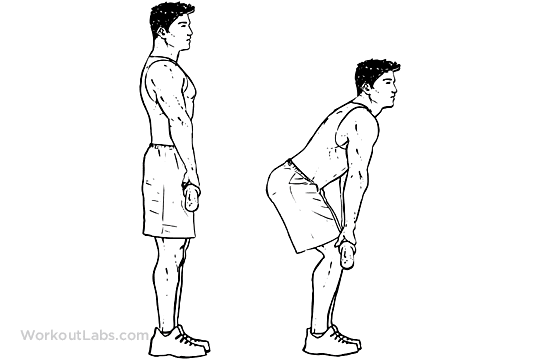What is the rack pull?
The rack pull, or partial deadlift, is an accessory exercise rarely considered, but almost fundamental for building a solid back, to improve one's numbers in the deadlift, and to solve any weaknesses in the execution of this. movement.
A solid back: From the trapezes to the calves, almost every single muscle in the posterior chain - those responsible for extending the hips and back - is affected by this movement. The rack pull is an exercise favored by bodybuilders, who use it to give their back a firmer look.
A better deadlift: the rack pull insists on the central and final phases of the deadlift, activating the same muscle fibers without consuming the enormous amount of energy needed to generate the force needed to detach the discs from the ground. For this reason, the nervous system experiences considerably less stress, which reduces recovery times.
Solve the weak points in the deadlift: precisely because the same muscles are stressed with very high loads. A not secondary aspect is that, with a healthy attendance of the rack pull, even the grip improves significantly; and grip is often a limiting factor for the athlete who engages in heavy deadlifts.
In detail, the rack pull works on the following muscle sections:
- Hip Extensors. Specifically, glutes and hamstrings. Hip extension is an essential element of many athletic movements; It is clear how the rack pull can bring benefits that go beyond those related to weight lifting.
- Spinal erectors (back extensors). They are the muscles that absorb most of the work needed to perform the rack pull, absorbing the stresses that would otherwise involve the ligaments and vertebral discs. The erectors do not change length during movement and are therefore trained isometrically.
- Retraction of the shoulder blades. Pulling the shoulders back allows you to develop a very strong arch of the back during the movement. The trapezoids and rhomboids are subjected to an excellent job.
How to do it
The barbell is placed on the rack supports positioned at the required height - the three positions usually used are below the knee, above the knee, and mid-thigh. Depending on the starting position, therefore, the activation of the muscles changes, so much so that both the powelifters and the strongmen insert into their training routines pulled from different heights.
You position yourself against the barbell in the deadlift position: feet under the hips, shoulder-wide grip, back arched, also pushed back to activate the hamstrings. The grip can vary and, as the exercise is generally performed with large loads, it is permissible to use the much mistreated bands. The gaze points forward.
As for the execution of the different deadlift assistance exercises, it becomes essential to assume the same positions and perform the same movements, however partial, that we will use in the actual deadlift, to work on the same muscle patterns affected by the deadlift.
Similar to the middle and final stages of the deadlift, the knees are also extended at the same time, and the bar is raised to full lockout. At the end of the movement, the shoulders are pulled back. This position is held for about a second, and the bar is returned to the starting position.
At no time during the execution should the back bend.
Rack pull is performed in short sets, with very high loads.

Errors in execution
One (quite common) mistake and two warnings:
It should be remembered that we are performing a partial deadlift: therefore we must not fall into the temptation to slip our knees under the barbell, and push it upwards as in a squat - from this point of view, careful preparation is essential. of the initial position of which it was previously mentioned.
The rack pull calls for very high weights: to avoid the risk of injury, it is therefore a movement perhaps not really suitable for beginners.
And, finally, for this very last reason, we keep our ego in check, and we avoid loading too many discs on the bar. In this way, we will be able to enjoy the benefits of an excellent accessory exercise and, gradually, increase our deadlift.


























